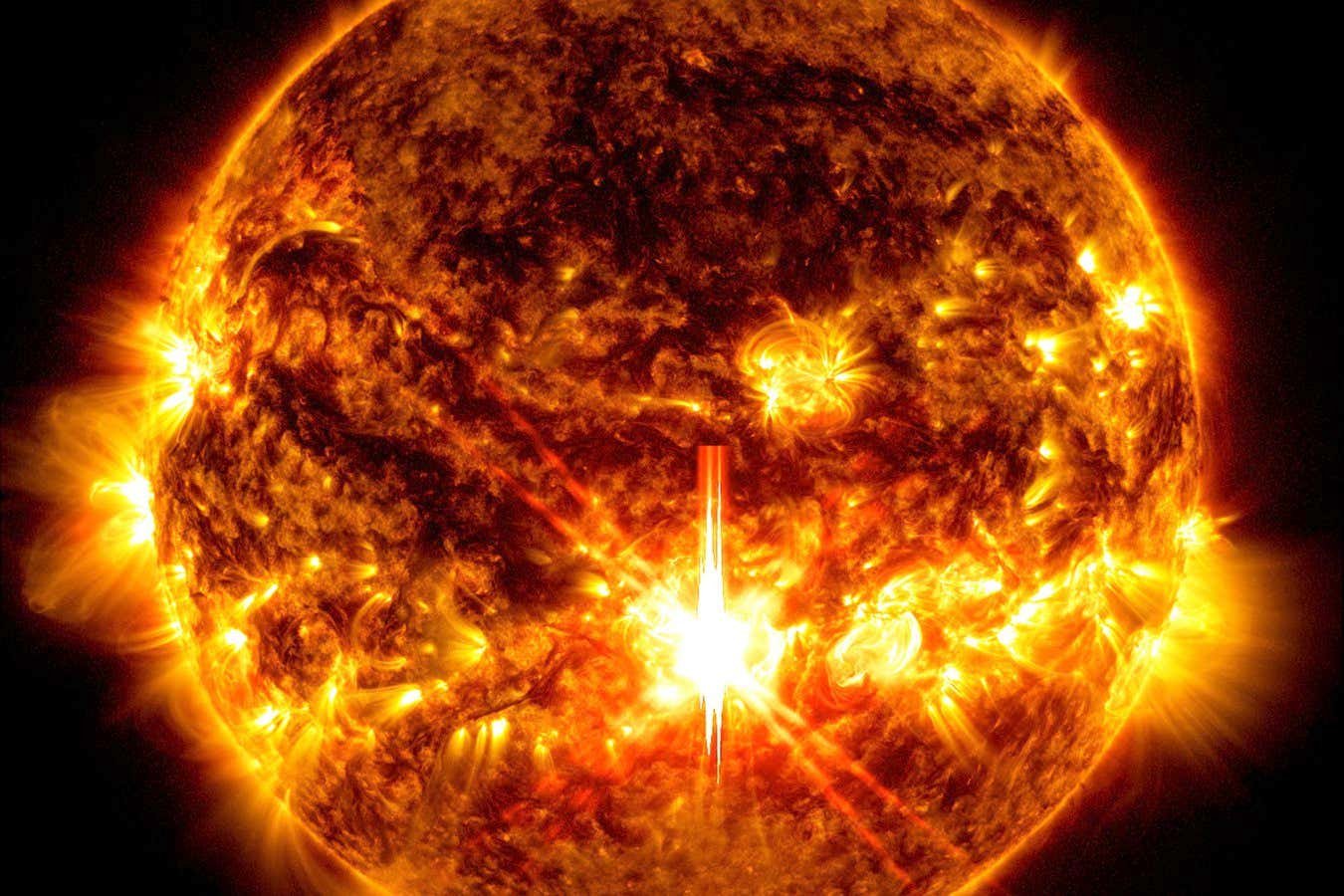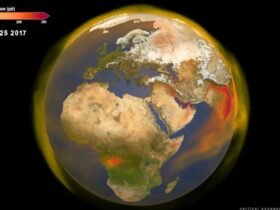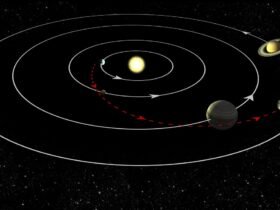
This relatively small solar flare from October – the bright flash in the centre spotted by NASA’s Solar Dynamics Observatory – would be dwarfed by a superflare
NASA/SDO
The sun may produce extremely powerful bursts of radiation more frequently than we thought. Such “superflares” seem to happen as often as once a century, according to a survey of sun-like stars, and might be accompanied by particle storms that could have devastating consequences for electronics on Earth. As the last big solar storm to hit Earth was 165 years ago, we might be in line for another soon, but it is uncertain how similar the sun is to these other stars.
While direct measurements of the sun’s activity only started towards the middle of the 20th century, there is earlier evidence of solar storms. We know that in 1859, our star produced an extremely powerful solar flare, a burst of light radiation. These are often associated with a subsequent coronal mass ejection (CME), a bubble of magnetised plasma particles that shoots out into space.
That flare was indeed followed by a CME that struck Earth and caused an intense geomagnetic storm, which was recorded by astronomers at the time, and is now known as the Carrington event. If this happened today, it could knock out communication systems and power grids.
There is also evidence on Earth of much more powerful storms long before the Carrington event. Assessments of radioactive forms of carbon in tree rings and ice cores suggest that Earth has occasionally been showered with very high-energy particles over periods of several days, but it is unclear whether these came from one-off, massive solar outbursts, or from several smaller ones. It is also uncertain if the sun can produce flares and particle storms so large in a single outburst.
The frequency of these signs on Earth, as well as superflares that astronomers have recorded on other stars, suggested that these giant bursts tend to occur many hundreds to thousands of years apart.
Now, Ilya Usoskin at the University of Oulu in Finland and his colleagues have surveyed 56,450 stars and found that sun-like stars appear to produce superflares much more often than this.
“Superflares on sun-like stars are much more frequent than we thought before, roughly once per one or two centuries,” says Usoskin. “If we believe that this projection to the sun is correct, then we expect a superflare on the sun roughly every 100 to 200 years, and extreme solar storms, as we know them, occur roughly once per 1500 or 2000 years. There is a mismatch.”
Usoskin and his colleagues measured the brightness of the stars using the Kepler space telescope and detected a total of 2889 superflares on 2527 of the stars. The energies for these flares were between 100 and 10,000 times the size of the largest measured from the sun – the Carrington event.
We still don’t know whether such large flares also produce large particle events of the sort we have evidence for on Earth, says Usoskin, but our current theories of the sun can’t explain such large flares. “This opens a question of what we are actually seeing,” he says.
“As a stellar flare survey, it looks really impressive,” says Mathew Owens at the University of Reading, UK. “They’ve clearly got new methods for detecting flares with increased sensitivity.”
How much this tells us about the sun’s flaring activity is harder to discern, says Owens, partly because it is difficult to accurately measure the rotation rate of other stars. “The devil is in the detail here,” he says.
“The rotation rate is important because it’s linked to how a star generates a magnetic field, and the magnetic field is linked to flaring activity,” says Owens.
Topics:













Leave a Reply